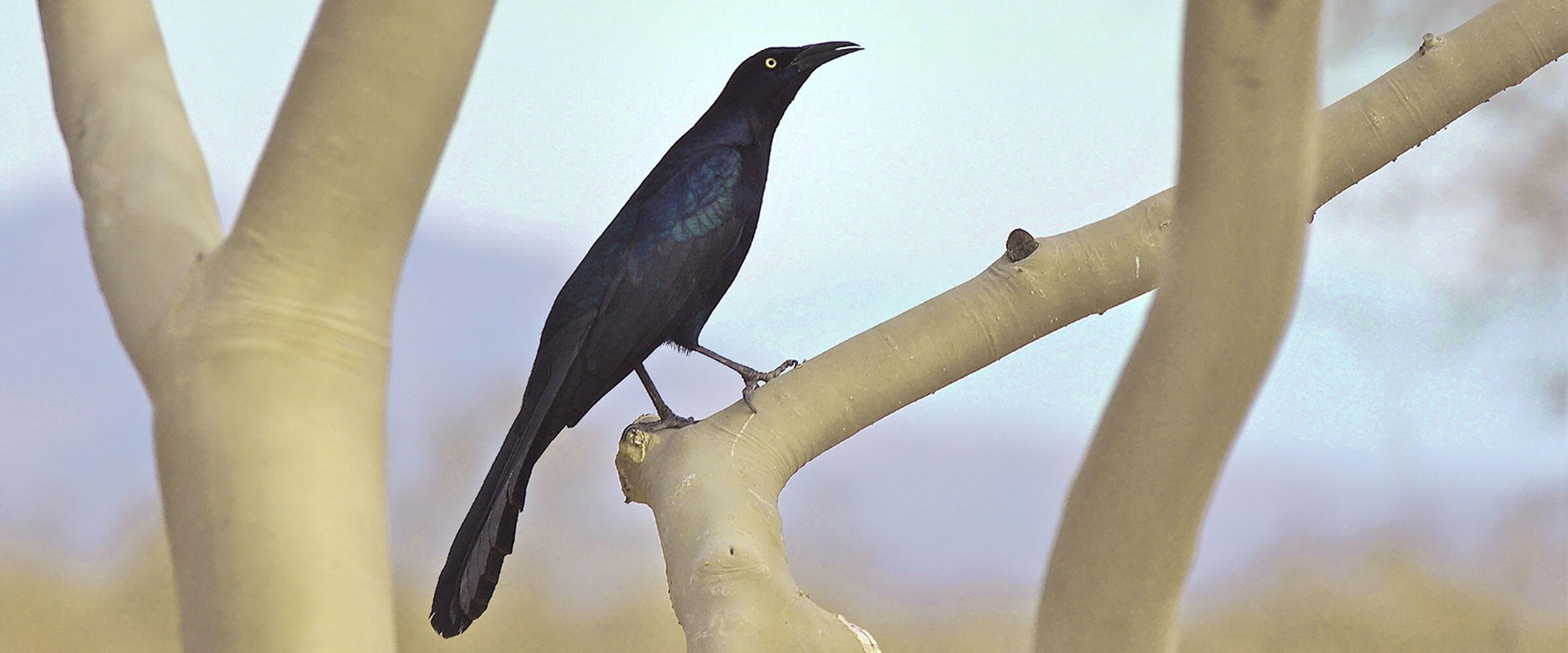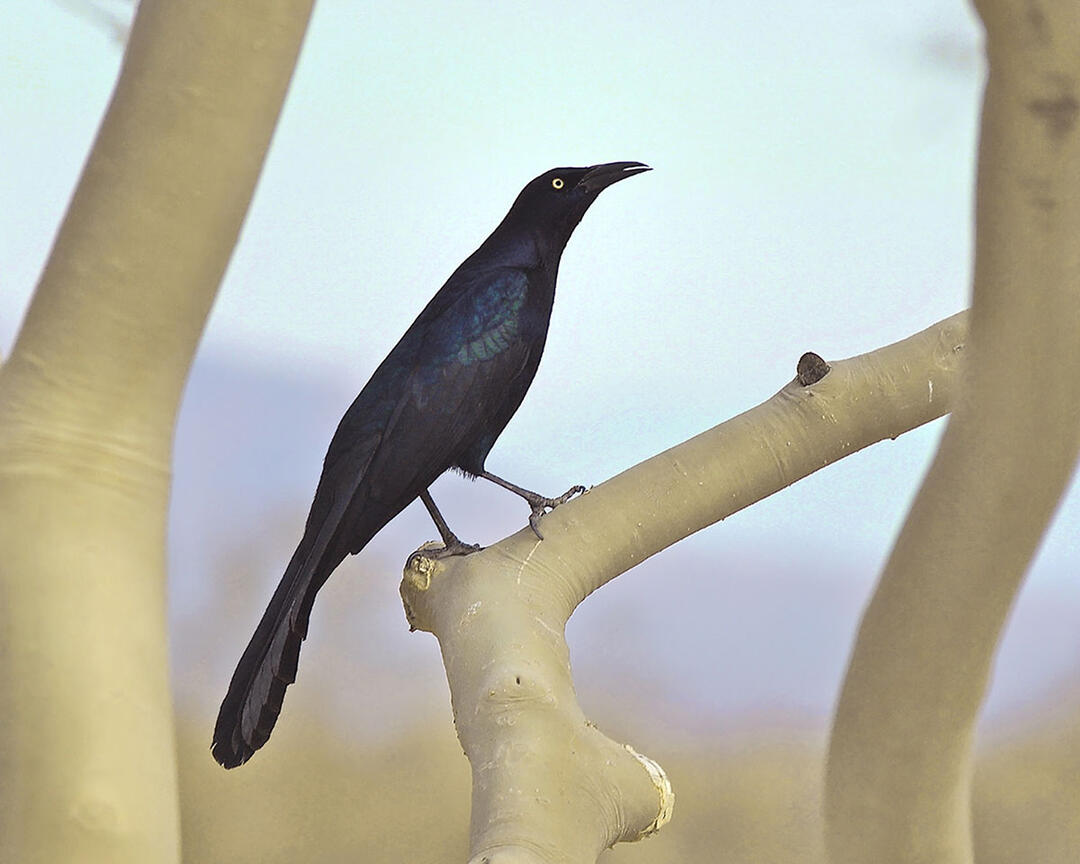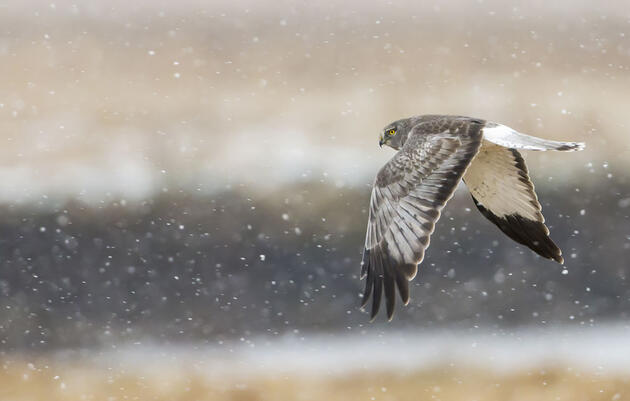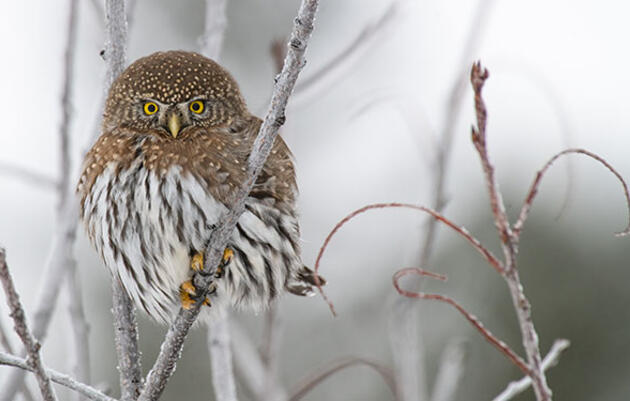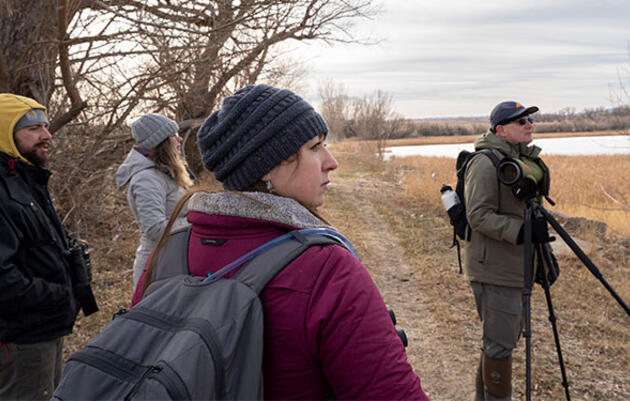The 2022 annual Bridgerland Audubon Society (BAS) Christmas Bird Count (CBC) based in Logan, Utah was a welcome thawing of viral threats, allowing us to host some CBC newcomers and flock together for our traditional compilation potluck. Board members organized a dedicated crew to continue this long-standing tradition during Logan’s 67th annual CBC.
After an unusually snowy period leading up to the bird count, the skies cleared and the temperatures plummeted on count day, December 17. Roads were bare and dry, and the sunny, still air was a boon for chilly bird watching. A flock of committed, capable observers, plus swelling ranks of feeder watchers, allowed us to find 94 bird species, the average for our chapter’s CBC counts. Over 58,000 individual birds were tallied, 90 percent of them being invasive species—and mostly European Starlings (48,926)—but hey, that’s 15,000 fewer than last year!
Owlers were quite successful this year, prowling around in the chilly predawn to hear four of the seven owl species found in the Logan area. American Robin numbers have been down for the past six years (about half of the average numbers), but we did spot a near-record number of Common Ravens. BAS also had better-than-average counts of Northern Flickers, Townsend’s Solitaires, and both Downy and Hairy Woodpeckers.
For the fourth straight and only years, an impressive 41 Great-tailed Grackles were swaggering around, too. Has this species become a new winter resident in the Logan, Utah area? Possibly! In 2008, BA counted our first Lesser Goldfinches. Now, we count 50 to 100 annually, plus resident breeding populations, even as the species retreats from much of their southern range. Several other rarities in BAS's 68 years of counting were also espied in the most recent CBC, including Bohemian Waxwings, two Pine Grosbeaks, and both a Harris’ and White-throated Sparrow. And among home feeders, a persistent Hermit Thrush was spotted at a heated suburban bird bath, as well as a regular duo of Western Scrub Jays. Ornamental white birches were thronged with Lesser and American Goldfinches and Pine Siskins, all of them extracting the birches’ tiny seeds.
Counts of our web-footed friends (not including Canada Geese) were again down fifty percent or less, much like in 2021, including the Pied-billed Grebe, Bufflehead, Redhead, Canvasback, Northern Pintail, American Wigeon, Ring-necked Duck, and Northern Shoveler. For instance, BAS usually counts 500 to 4,000 Gadwall; this year, we saw just 79. We saw only 20 Coots, too. Coots! Declining sightings of ducks may reflect warmer weather late into autumn, leaving more open water across the valley these past few counts, which allows birds to spread to areas where we don’t see them. Drought across the Western United States is no doubt diminishing their nesting success, too.
Gull numbers remain low after the closure of the local landfill. Snipe, rails, and Wood Ducks were always elusive finds but remain absent in recent years, succumbing to shrinking or filled wetlands and spring heads. A warm autumn may explain seeing six lingering Trumpeter Swans, too, which we last recorded during BAS's 2021 CBC. More Golden Eagles (eight) were seen than usual, but Bald Eagle numbers were down. Most irruptive species were absent from our count, including Red Crossbills and all-but-one Evening Grosbeak. Last January, Redpolls were seen up Smithfield Canyon working river birches for seed, but as usual, they did not grace our count. They will be well worth a search, however!
Conditions in the BAS count circle continue to change. Rampant development on both the benches and valley floor take its toll on habitats. At Guinivah Campground up Logan Canyon, the tree canopy of massive (and non-native) crack willows was cut down. Though never productive for CBC birds in the winter, its gradual transformation with time should be reflected in future counts.
Bridgerland Audubon’s count relies entirely on the keen eyes, identification skills, and perseverance of our volunteer birders. Frank Howe and other board members organized our dedicated crew and Wayne Wurtzbaum ably tackled recording and reporting of this year’s count, aided by Debi and Makenna Bird. We greatly appreciate so many stalwarts sticking with the count, despite other demands of the holiday season. It was nice to flock up again to swap tales about tail feathers seen. As a consequence, our local CBC remains an unbroken continuum that stretches back over more than a half-century.
Learn more about the Audubon Christmas Bird Count and how to participate.

